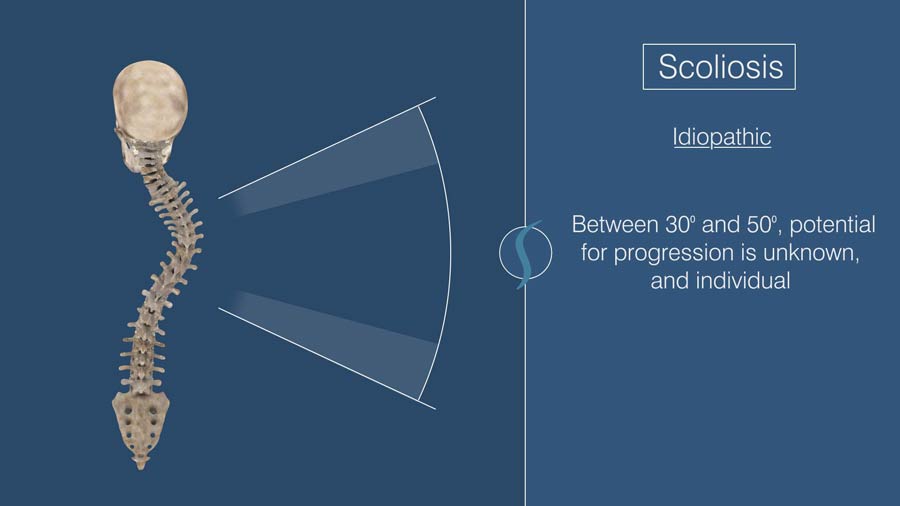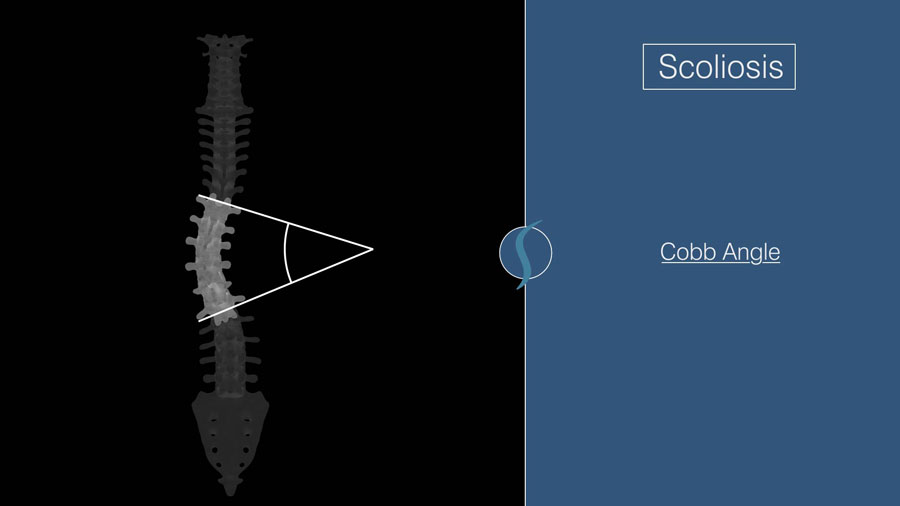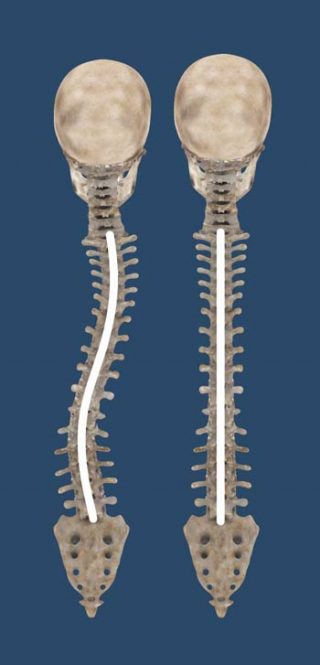Understanding Scoliosis
The spine has a natural curvature shaped like an “S” when viewed from the side. The neck and lower back regions are “C” shaped while the middle chest region has a “reverse-C” shape. When viewed from the back the spine appears straight. An abnormal curvature in this plane, with rotation of the vertebrae, is called scoliosis.
Background
When comparing a normal spine and scoliosis in this view, you’ll immediately notice the abnormal sideways curve compared to the normal straight spine. Although a small degree of curvature is common, anything exceeding 10 degrees in a child younger than 10 years old or 20 degrees for patients older than 10 years is considered scoliosis. The severity of the deviation varies depending on the individual and, in mild cases, individuals often don’t experience any symptoms beyond the cosmetic deformity.
Types of Scoliosis

The most common form of scoliosis, accounting for 80% of all childhood scoliosis cases, is idiopathic; that means, there is no specific cause. Abnormal curves found in infants usually resolve spontaneously (90%), but juvenile scoliosis is often progressive and has the potential for severe deformity with heart or lung issues. Studies show that skeletally mature patients with idiopathic scoliosis do not progress when the curves are less than 30 degrees, whereas those greater than 50 degrees do continue to progress. Between 30 and 50 degrees, potential for progression is unknown, and individual.

Degenerative scoliosis, on the other hand, results from asymmetric disc degeneration — that is, the natural wear and tear of the spine over time — and affects roughly 40% of the population and is most prevalent in elderly populations. This type of scoliosis usually occurs in the lower back with an average curvature of 30 to 40 degrees. Some of the associated symptoms include difficulty standing upright, back pain, and sciatica — radiating pain from your lower back down to your legs.
Diagnosis
Children are usually screened for scoliosis during their annual check-up. Doctors will check for any asymmetry between shoulder blades as well as shoulder and hip height. You should be able to draw a horizontal line between the tops of the patient’s shoulders and across the waist. Those with scoliosis will not have these straight horizontal lines, instead the lines will be diagonal.

The measurement of interest for scoliosis is the Cobb angle. To measure it, one must first identify which vertebrae are at the end of the curve deformity; their endplates will be the most tilted towards each other. Lines are then drawn along the endplates and the angle created from the intersection of these two lines is measured. This measurement is what’s being referred to when discussing the degree of spine curvature.
Treatments

The earlier you treat scoliosis, the better the outcome will be. That being said, mild curves of 20 degrees or less may not experience symptoms beyond back strain or fatigue in prolonged positions. Those with more pronounced curves are at risk for more severe complications, particularly patients with curves that are 50 degrees or more in the thoracic region and 40 degrees in the lumbar region. Left untreated, individuals are at greater risk for spinal instability, disc herniations, spondylolisthesis, sciatica, uneven gait, and nerve damage.
Bracing has been used to prevent progression of scoliosis. It’s typically recommended for patients with a moderate curve between 20 and 40 degrees that is also progressive. Braces are designed to be worn for 16 to 23 hours until the patient is fully grown. While the research behind the efficacy of bracing is variable, it’s still considered the best nonsurgical option for a growing child and current developments look to improve the efficacy and overall usability.
In cases where a patient’s quality of life can be affected, surgical intervention might be necessary to correct the patient’s scoliosis. The most common surgery is spinal fusion to stabilize the abnormal curvature of the spine. Modern pedicle screw systems are also used to reduce and correct the rotation of the spine. However, the average rate of complication remains quite high standing at around 22% in patients with adolescent idiopathic scoliosis. The development of new innovative strategies including GPS-guided robotics surgery and close monitoring of the spinal cord and nerve root have resulted in improved outcomes.
I hope this video &blog helped you understand the current research on scoliosis. Until next time, this is Dr. John Shim.
Last modified: May 6, 2021









